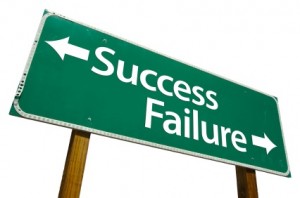 OK, truth-in-advertising time. The meeting isn’t the problem. It’s typically the thinking behind the meeting that is often horribly wrong.
OK, truth-in-advertising time. The meeting isn’t the problem. It’s typically the thinking behind the meeting that is often horribly wrong.
From the symbolism of the event to the cost to the fact that strategic thinking time is reduced to a once or twice a year event, this approach is anachronistic in a world with markets and conditions changing daily.
In twenty years of these things with some great people and great businesses, I’ve yet to see anything come out of these meetings that changed our businesses. I will offer that they did allow for another layer of vetting and idea absorption. Nonetheless, the heavy lifting took place with others outside of the cozy confines of a resort or hotel meeting room.
My Top Six Reasons Why the Off-Site is Counter-Productive
1. Strategic insights don’t happen on command or according to a calendar. In a well-run business, they are being generated in real time, all of the time.
2. #1 said another way: strategy is a process, not an event, and the executive off-site reinforces “event” thinking. In today’s world, the best performing firms constantly refresh based on market forces, competitor activities and changing customer needs. Strategies require constant adjustment and adaptation, and the “strategy as event” approach is too little too late.
 3. Strategy is a full-contact activity, with ALL hands involved in some form and at some time. There’s nothing to be gained by creating an exclusionary event for all to wonder about. Keep the work near to the team and keep the revolving door moving with people from all areas called upon to provide input and ideas.
3. Strategy is a full-contact activity, with ALL hands involved in some form and at some time. There’s nothing to be gained by creating an exclusionary event for all to wonder about. Keep the work near to the team and keep the revolving door moving with people from all areas called upon to provide input and ideas.
4. Effective strategy programs are true organizational learning activities, where market-based input and feedback are digested to help identify needed changes. Most of the people doing the learning and most of the people who best understand the voice of the customer aren’t in or near the meeting. That’s a problem.
5. You cannot separate strategy from execution, and anything that distances a group from the reality of the need to support execution is a distraction. It’s brutally easy to conquer the world from the confines of a boardroom. It’s another thing entirely to make it happen through others.
6. #6 said another way: most strategy programs fail or derail due to execution. Good programs move efficiently from ideation and filtering to execution planning. Call me crazy, but at the right time, I want the opportunity to communicate with and gain insights and ideas from the people doing the work.
The Bottom-Line for Now:
The strategy-offsite is a convenient symbol of what is too often a broken or ineffective means of sharing insights and setting a course. We all recognize that part of what executives do is meet and talk about the critical decisions that they are facing. However, when it comes to working with the tools of strategy, I want to be close to the people with the experience, insights and the responsibility for execution.
Perhaps its time to reinvent your approach to sharing insights, gaining and filtering ideas and planning your next moves for your business. My vote is to be as close to the team and the market as possible. Invest the money you would spend in an off-site in visiting customers and partners and in involving your extended team members. The insights, buy-in and heightened awareness and energy that come from involvement are all priceless.






Leave A Comment